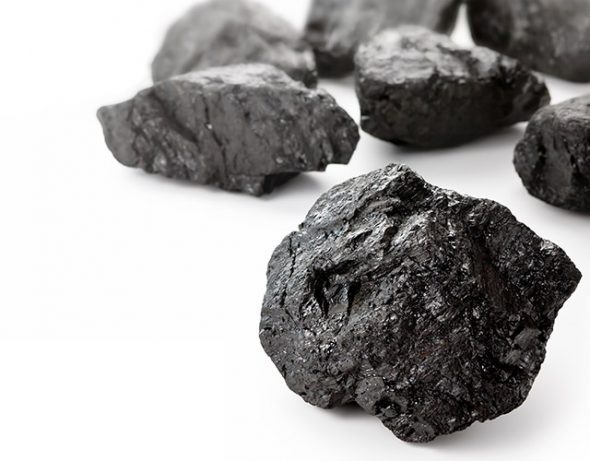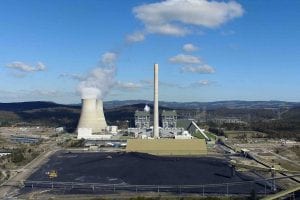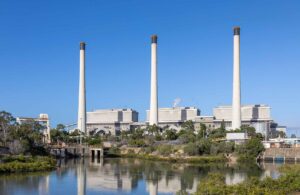
Clean coal may be a marketing term that you can still read in the Murdoch press and hear on the ABC, but the technology remains nothing more than a fantasy – and a point of distraction and a lacquered prop for the fossil fuel industry and its proponents.
The Australian National Audit Office (ANAO) has published a damning assessment of Australia’s carbon capture and storage program, noting that more than $450 million has been invested by the government over the past decade, and nothing achieved.
Not a single tonne of CO2 has been saved, no technology is ready for deployment, and the ANAO report slams the government for having no strategic direction, no oversight over the projects, and little accounting for the spending.
Australia’s CCS programs were launched by former prime minister Kevin Rudd in 2007 and 2009 as part of his climate package, and the vision then – despite enormous skepticism that the technology was a crock – was to have 20 plants up and running by 2020, so Australia could “lead the world”.
The technology was championed by Labor energy minister Martin Ferguson and the Coalition’s Ian Macfarlane. Ferguson warned the “lights would go out” without it. Both Ferguson and Macfarlane now work for major fossil fuel lobby groups and are still campaigning relentlessly against renewables.
The ANAO report focuses on two of the federal government’s “clean coal” initiatives – the Carbon Capture and Storage (CCS) Flagships program, and the National Low Emissions Coal Initiative (NLECI).
“Key performance measures for the programs provide limited insight into the extent to which the programs are achieving the … strategic objective of accelerating the deployment of technologies to reduce greenhouse gas emissions,” ANAO notes.
Indeed, at one point, the only performance measure monitored by the department of science and industry was the number of programs, not what the programs were actually doing or, as it turns out, not doing.
The NLECI was assigned $500 million and given the task of demonstrating “clean coal” technologies, including CCS, by 2015, and making them available for commercial deployment by 2020.
It spent $233 million, but nothing happened, and it was a farce from the get-go. ANAO notes it had no program guidelines or risk management plans in place.
Three of the five initiatives didn’t happen because of technology and cost issues; there was no clear rationale in selection of replacement projects and there is no detailed assessment of what, if anything has been achieved.
The CCS Flagships program fared little better. The government originally proclaimed it would result in “at least 20 large-scale, integrated CCS demonstration projects” being launched globally by 2010, for broad deployment of CCS by 2020.
It was initially promised $2 billion, but this was gradually wound back, presumably as successive governments recognised what a complete boondoggle the technology was.
CCS Flagships ended up spending $217 million and another $42 million is committed. According to ANAO “none of the CCS Flagships projects met the original timeframe or reached the stage of deployable technology as originally envisaged in the program design.
“It is therefore unclear whether the program is capable of delivering on its strategic policy objective as the program is due to close in 2020 and all funding is currently committed.”
Nearly every paragraph of the report is a damning assessment of what is clearly government and bureaucratic incompetence.
Some examples:
“Program guidelines were not subsequently developed to provide advice to departmental staff on project selection, decision making processes, and applicant requirements.”
“Specific conflict of interest arrangements were not in place at the commencement of the program.”
“Despite the program being in operation since 2008, the first risk management plan for the program was not completed until the first quarter of 2011–12.”
Projects in NSW were closed early because, farcically, it turns out there were no storage options.
On the flagships, the government must have had a sense that most projects would fail, so it wanted to fund as many as possible. Some $4 billion was considered before being reduced to $2 billion.
In the end, a fraction of that was spent, there was “no over-arching strategy”, and nothing succeeded.
The projects funded, including the notorious Zerogen project, have all failed. “None of the projects have met the original timeframe of the program. Reasons for this include: technical feasibility; absence of suitable storage options; and financial feasibility,” ANAO notes.
The most extraordinary part of the report goes to the assessment of whether it was all worthwhile. Clearly not, but you wouldn’t know that from the program details.
As ANAO notes:
Currently, there is no transparent framework in place to publicly report program outcomes. The department has established one performance measure for each program, related to the number of projects supported (NLECI) and the number of companies supported (CCS Flagships). However, these measures provide limited insight into whether the program is achieving its strategic policy objectives.
Amazingly, the department is congratulated for having “exceeded” this, the one and only key performance indicators, because it supported more projects than it planned. Little matter that they were all complete duds.
“As shown in Table 4.7, for the period 2014–15 to 2015–16, the department has met, and for the CCS Flagships program in 2015–16 exceeded, the performance targets set for the program,” ANAO notes, before going on to suggest that the number of projects may not provide insight enough.
“The CCS Flagships program has not been evaluated despite over eight years of operation,” it notes.
That’s not surprising. It is probably too much to expect of the government department to admit – like many coal industry executives – that clean coal is a myth, and a waste of everyone’s time and money.
It takes the breath away.








